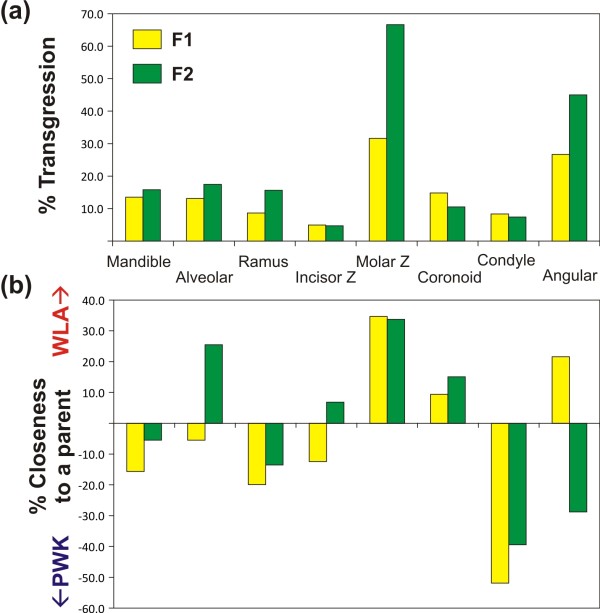Figure 4.
Transgression in hybrid shape and closeness to parental strains for each partition of the mandible. (a) Degree of transgression of F1 and F2 hybrids. In the absence of transgression, hybrids should be in a strictly intermediate position between the parental strains, and hence the sum of the distances between the hybrids and each one of the two parental strains should be equal to the distance between the two parental strains: e.g. d(F1, WLA) + d(F1, PWK) = d(WLA, PWK). The degree of transgression is thus given by the extent to which the hybrids differed from this theoretic expectation, hence for F1 hybrids: d(F1, WLA) + d(F1, PWK) – d(WLA, PWK) expressed as a percentage of the inter-parental strains distance d(WLA, PWK). (b) Degree of closeness to the parental strains. The degree of closeness to a parental strain was estimated by assessing the extent to which the distance to one parental strain was smaller than the average distance between the hybrids and the two parental strains, hence for F1 hybrids: [d(F1, WLA) + d(F1, PWK)]/2 – d(F1, WLA), expressed as the percentage of the average distance of hybrids to the parental strains [d(F1, WLA) + d(F1, PWK)]/2. Positive values thus indicate closeness to the WLA, and negative values to the PWK parental group. Consensus (average) shape was calculated for each one of the four groups (domesticus WLA, musculus PWK, F1 and F2 hybrids) and morphological distances were computed based on a Procrustes superimposition of these four items.

